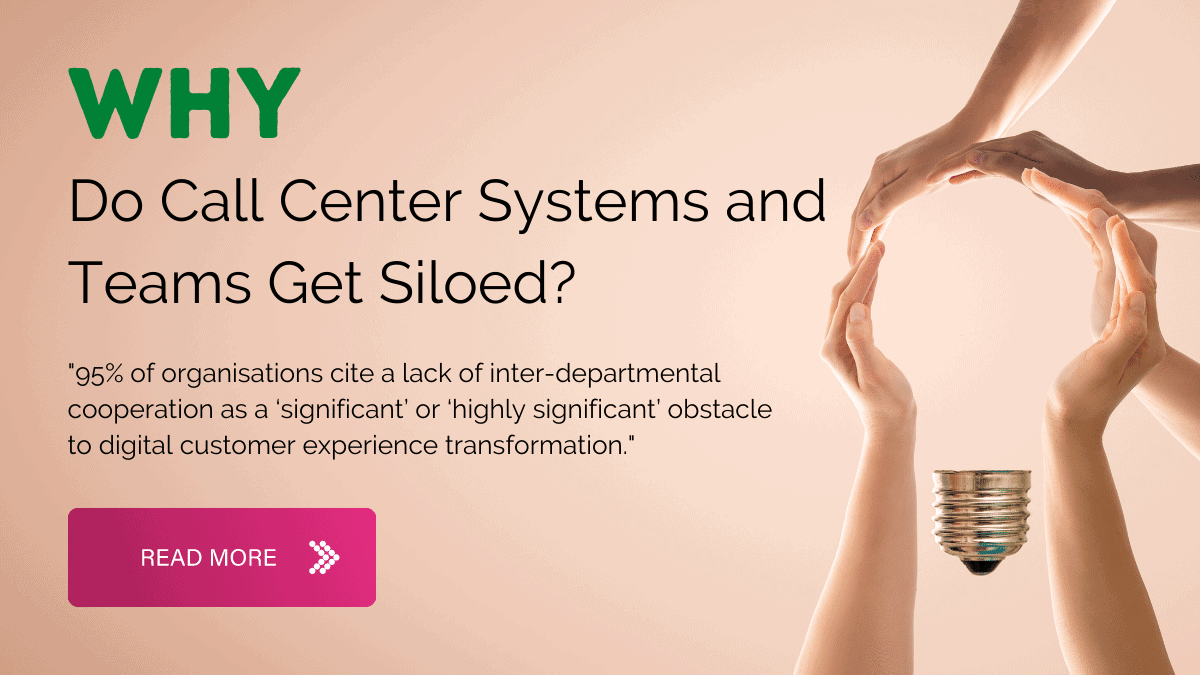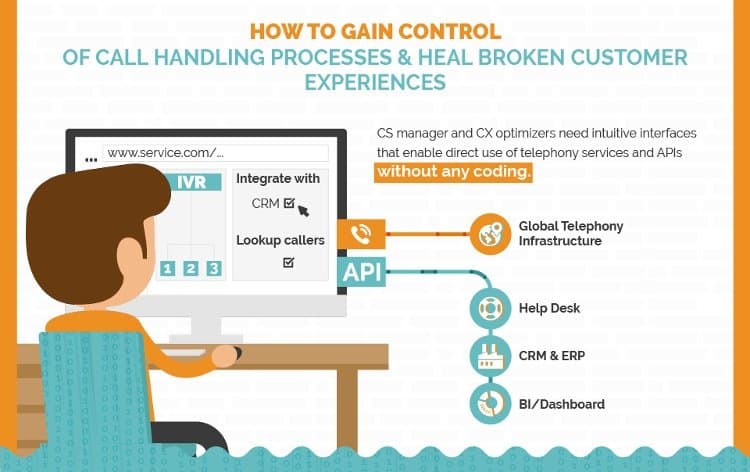With traditional call center software solutions, the agents tended to be on totally different systems to the other employees. New system architecture and philosophies are changing the way teams interact.
To some extent this is still the case: nobody will buy licenses for non-agents to use a solution that is specialized for customer service. That would make no sense. Still, in many businesses, agents need to involve other team members from sales, back office staff, 3rd or 4th level technical support, etc. in order to solve the customer’s problem.
This is reflected in the changing requirements visible in RFPs, where it is now common to see sections on sharing data, particularly call data. For example, we frequently see requirements to make non-agents into some form of user with access to the same information as the customer service agents.
In fact, in a world of ever-increasing communication between business tools, siloed systems are causing problems in the call center. MyCustomer.com recently highlighted a report by KCOM and CCA Global which found that 95% of organisations cite a lack of inter-departmental cooperation as a ‘significant’ or ‘highly significant’ obstacle to digital customer experience transformation.
In our experience, the key to making sure processes can work efficiently across call center and other teams is to have the ability to easily change business processes across integrated but separate communication solutions. The following are two elements which enable that:
- Business software providers must have a committed strategy to only deploy products with powerful APIs. As soon as any solution used by any team is weak in its business process integration capability (i.e. its APIs), you can be sure that it will be a blocker to an important process at some stage.
- Providers must also offer tools which allow businesses to create and change processes without starting large software projects. Essentially, the larger the project needed to change a process, the less likely it is that you will be able to benefit from efficient sharing of information across different teams. Why? Because processes are always in flux, and if your ability to change integrations is limited then you will always be needing workarounds and interim solutions. So you will always be operating well below the full potential efficiency level.
The good news is that achieving this level of pure configuration control across APIs has become easier than ever before. With no-code automation approaches, it is now possible to implement and change even complex integrated processes without any major IT project. Complex API actions to integrate systems can be configured on an intuitive platform and connected to your phone service.
Given that the tools are now available, the key question for any business wishing to maximize the efficiency across contact center and other teams is this: Do you have a clear strategy for making the most of the no-code automation revolution and selecting the right tools to do that?
This is particularly important when it comes to the call center architecture that a business selects, since frequently it is in these components that barriers to integration cause problems with efficiency improvements related to collaboration between teams.






